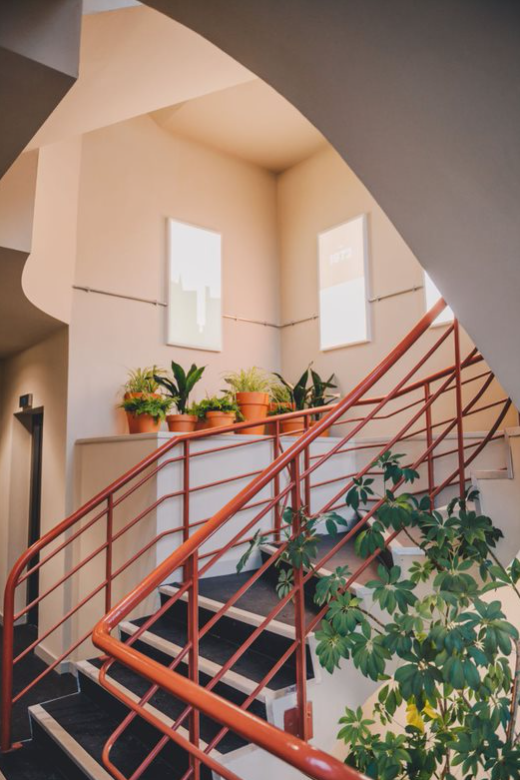Today is Cities, Regions & Built Environment Day at #COP26 and there is a session taking place titled ‘How buildings will play a role in fighting climate change’.
As a Housing Association we have a huge responsibility to reduce the environmental impact of the homes we provide right now, and those we are currently building and are yet to build. This extends to working with our colleagues and customers to create understanding of the issues, and the actions they can take to be part of the climate solution. It’s an enormous challenge, but one that we are committed to and have prioritised in our organisational strategy.
In this article you can hear from some of the people across our business who are working in many ways to make sustainable changes for the future, central to which is how our housing stock will play a role in fighting climate change.
Main Road Housing Development
‘Main Road’ is one of our latest housing developments and is an exciting step in our ongoing work to create a series of sustainable building ‘typologies’ that we will be able to choose from to replicate in different locations.
Once complete, our Main Road development will include 40 new homes all of which will have been built following the ‘fabric first’ principle. This approach has a strong focus on creating buildings that will require as little energy to run as possible, supplied from the best source possible. This is being achieved by:
1. Creating a draft free, highly insulated building meeting the exacting AECB standard, with close attention paid to construction quality.
2. Maintaining high air quality, controlling the air flow using a Mechanical Ventilation and Heat Recovery system
3. Supplying the home with sustainable sources of energy. At the moment, due to funding constraints, the homes at Main Road are being built with gas heating, but the designs are being future proofed to support an easy change to low carbon heating in the future.
Our approach to new developments like Main Road also includes many other environmental positives in addition to the buildings themselves. This includes acquiring land that is close to public transport links, installing dedicated cycle storage, and providing for the installation of electric vehicle charging points.
There is also a strong focus on providing high quality blue-green infrastructure including controlled rain streams to cope with heavy rainfall, and creating many green spaces for wildlife to thrive, and for our customers to enjoy.

Rockingham Street Office
In 2019 we moved into newly refurbished offices in Sheffield City Centre. The refurbishment project was led by SYHA, and included many features to improve the energy efficiency of the building, as well as reducing its carbon footprint. This included works to upgrade the glazing and insulation, using the concrete structure of the building to slow the speed at which the building heats or cools (helping to give a more stable room temperature through hot and cold periods), changing to sensor-controlled LED lighting throughout the building, and relocating rooftop solar panels from our old building.
In addition to re-designing and upgrading elements of the building itself, we were also able to think about the impact of the work we do inside the building, and that led us to making decisions such as moving from on-site servers, to a more efficient off-site data warehouse. We also used the opportunity to upgrade recycling facilities, to get away from overfilled kettles by installing zip taps instead, and other measures such as sensor taps in toilets.
We have also provided great facilities for cyclists, from plentiful secure cycle parking, to showers, drying cabinets and kit storage. Additionally we have installed electric vehicle charging points ready for a future with electric pool cars. Whilst these are still to come, we have recently introduced our first pool e-bike to the offices.

Green Homes Grant and Retrofitting
Earlier this year we received funding from Government’s ‘Green Homes Grant’ Local Authority Delivery scheme to retrofit some of our poorest performing homes. At this stage our work is strongly focussed on improving the fabric energy efficiency of the homes, including measures such as solid wall, loft, room in roof and under floor insulation as well as airtightness improvements. However, these properties are the tip of the iceberg, and ultimately we need to retrofit all our stock to a high fabric standard, as well as moving to low carbon heating solutions. This will require a major resource investment in terms of employee resource and skills as well as the cost of capital works.
We have also been working hard to develop a baseline understanding of the carbon impact of our current homes and corporate activities, and to develop a high-level decarbonisation roadmap. We are now at the “So what next?” stage and tackling the very difficult task of turning our roadmap into realisable plans and actions to deliver real world carbon emission reductions.
Housing currently contributes roughly over a quarter of carbon emissions in the UK. From housebuilders, to landlords, to Government and funders, and not forgetting those who live in homes, we all have a responsibility to embrace our roles in helping reduce this statistic. It’s a united effort that will ultimately have the biggest impact on all our futures.


